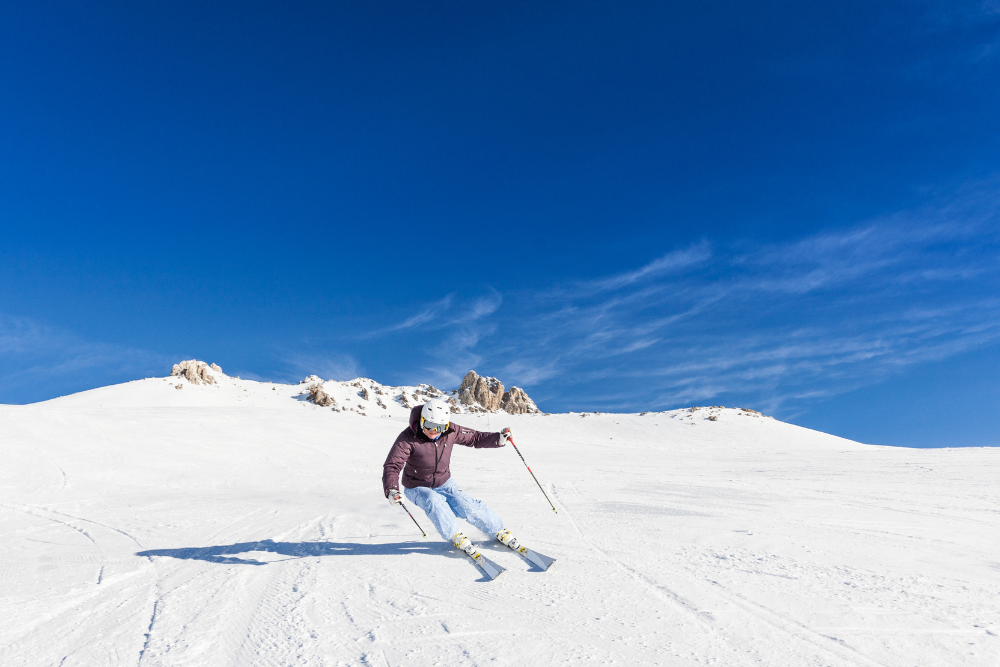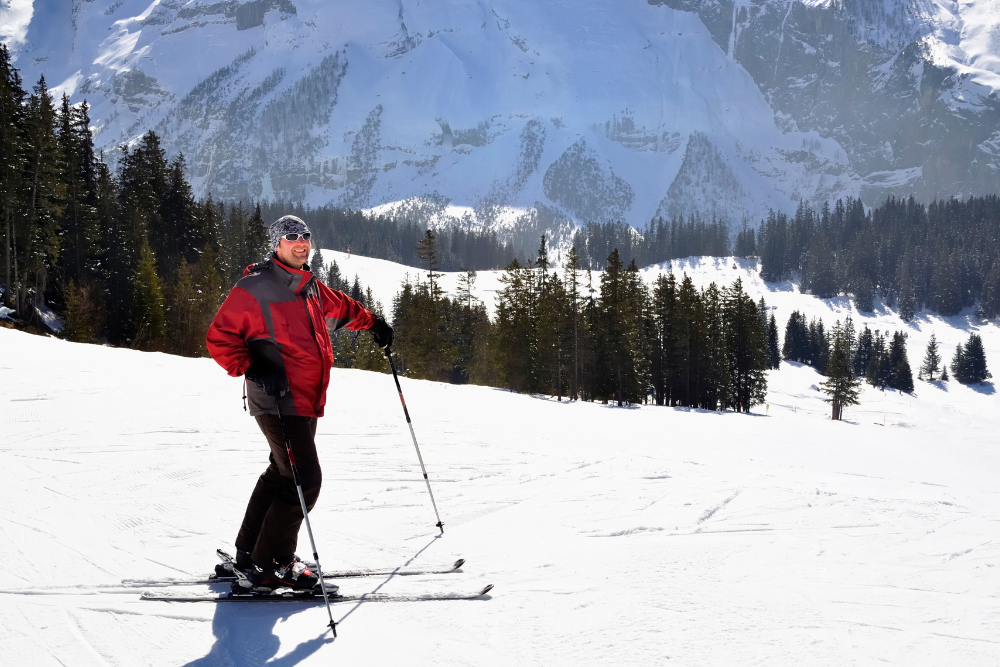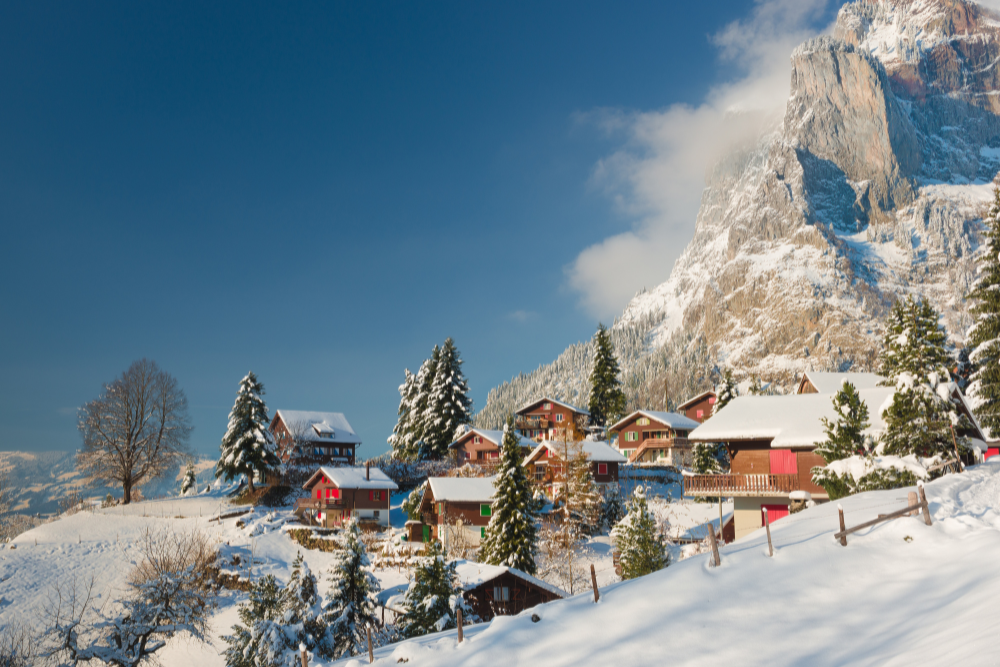Switzerland is widely recognized as one of the birthplaces of modern skiing. With its towering Alpine peaks, long winter seasons, and deep-rooted skiing traditions, the country played a pivotal role in transforming skiing from a means of transportation into a globally celebrated sport and leisure activity.
From early alpine explorers to the establishment of world-class ski resorts and international competitions, Switzerland’s influence on skiing has been profound. This article explores Switzerland’s contributions to the development of modern skiing, including its historical origins, technological advancements, and role in shaping ski tourism.
Early Skiing in Switzerland
Skiing as a Means of Survival
Long before skiing became a sport, it was a practical method of transportation for people living in the snow-covered Alps. Evidence suggests that early Swiss mountain dwellers used wooden skis to navigate steep slopes and travel between remote villages during harsh winters.
By the 19th century, Swiss mountaineers and military personnel were experimenting with skis for winter travel, but it wasn’t until the arrival of Scandinavian influences that skiing began to evolve as a recreational activity.
Norwegian Influence and the Birth of Swiss Skiing
Skiing as a sport was introduced to Switzerland in the 1890s, largely influenced by Norwegian skiing traditions. The turning point came when Norwegian engineer Olaf Kjelsberg and British ski enthusiast Sir Arthur Conan Doyle (the creator of Sherlock Holmes) brought the sport to the Swiss Alps.
In 1893, Norwegian students demonstrated skiing techniques in the town of Davos, which sparked widespread interest among Swiss locals and visitors. Inspired by these demonstrations, Swiss alpine regions began to embrace skiing as both a sport and a means of winter recreation.
The Growth of Swiss Skiing
Switzerland’s First Ski Clubs and Competitions
- In 1895, the first Swiss ski club was founded in Glarus, marking the beginning of organized skiing in the country.
- By 1902, the first official Swiss ski race took place in Gstaad, attracting both Swiss and international competitors.
- The Swiss Ski Association (Schweizerischer Skiverband) was established in 1904, helping to standardize the sport and promote ski tourism.
St. Moritz: The Birthplace of Winter Tourism
One of Switzerland’s most significant contributions to modern skiing was the creation of winter tourism, pioneered by the resort town of St. Moritz.
In 1864, hotelier Johannes Badrutt invited British summer guests to visit St. Moritz during the winter, promising sunny weather and snow-covered landscapes. His experiment was a success, leading to the world’s first winter resort.
By the early 20th century, St. Moritz had become an international hub for skiing, attracting aristocrats, royalty, and pioneering skiers. The success of St. Moritz inspired the development of other Swiss ski resorts, including Zermatt, Davos, Wengen, and Gstaad.
Switzerland’s Role in Competitive Skiing
The 1924 Winter Olympics and Switzerland’s Influence
Switzerland played a key role in shaping competitive skiing at the first Winter Olympic Games in 1924 in Chamonix, France. Swiss athletes competed in early skiing disciplines such as cross-country skiing, ski jumping, and Nordic combined.
In subsequent decades, Switzerland became a dominant force in alpine skiing, winning numerous Olympic and World Cup medals. Swiss skiers like Pirmin Zurbriggen, Vreni Schneider, and Didier Cuche cemented the country’s reputation in the sport.
The Development of Downhill and Slalom Racing
While early skiing competitions focused on cross-country skiing, Switzerland was instrumental in developing downhill and slalom racing:
- In 1928, the first Inferno Race was held in Mürren, becoming one of the world’s longest and most challenging ski races.
- In 1930, Sir Arnold Lunn, a British skier based in Switzerland, organized the first official slalom race in Mürren, revolutionizing competitive skiing.
- The Lauberhorn Race in Wengen (established in 1930) became one of the most prestigious downhill ski events in the world.
Technological Innovations in Swiss Skiing
Switzerland also contributed significantly to the development of ski technology and infrastructure:
The Invention of Ski Lifts
One of Switzerland’s most important innovations in skiing was the invention of mechanized ski lifts.
- In 1934, the world’s first overhead ski lift was built in Davos by Swiss engineer Ernst Constam.
- In 1938, Zermatt introduced the first cable car lift, allowing skiers to access higher altitudes effortlessly.
These advancements revolutionized the ski industry, making the sport more accessible and helping establish Switzerland as a premier winter destination.
Swiss Ski Equipment Innovations
Swiss manufacturers have been at the forefront of ski equipment development:
- Stöckli (founded in 1935) became a leader in handcrafted skis.
- Swiss ski boot companies developed advanced designs, improving comfort and performance for athletes and recreational skiers alike.
Switzerland as a Global Ski Destination
Today, Switzerland is home to some of the world’s most famous ski resorts, known for their perfectly groomed slopes, luxurious accommodations, and stunning alpine scenery. Some of the top Swiss ski resorts include:
1. Zermatt
- Offers skiing year-round with access to the Matterhorn Glacier.
- Home to the legendary Gornergrat Railway, which provides breathtaking views of the Alps.
2. St. Moritz
- Hosted the Winter Olympics twice (1928 and 1948).
- Known for high-end luxury skiing and elite competitions such as the White Turf horse race on a frozen lake.
3. Verbier
- A favorite for freeride skiing and off-piste adventures.
- Hosts the prestigious Freeride World Tour each year.
4. Wengen & Mürren
- Home to two of the world’s most iconic races: the Lauberhorn Downhill and the Inferno Race.
- Offers spectacular views of the Eiger, Mönch, and Jungfrau mountains.
5. Davos & Klosters
- Famous for hosting international leaders during the World Economic Forum.
- One of the oldest and most extensive ski areas in Switzerland.
Conclusion
Switzerland’s role in the development of modern skiing is undeniable. From pioneering ski tourism and establishing world-class resorts to advancing ski technology and shaping competitive skiing, the country has played a crucial role in transforming skiing into a globally beloved sport.
Today, Switzerland remains a top destination for both professional and recreational skiers, preserving its legacy as one of the most influential nations in skiing history. Whether it’s carving down the legendary slopes of Zermatt, St. Moritz, or Wengen, every ski enthusiast can experience the rich history and innovation that Switzerland has contributed to the sport.












